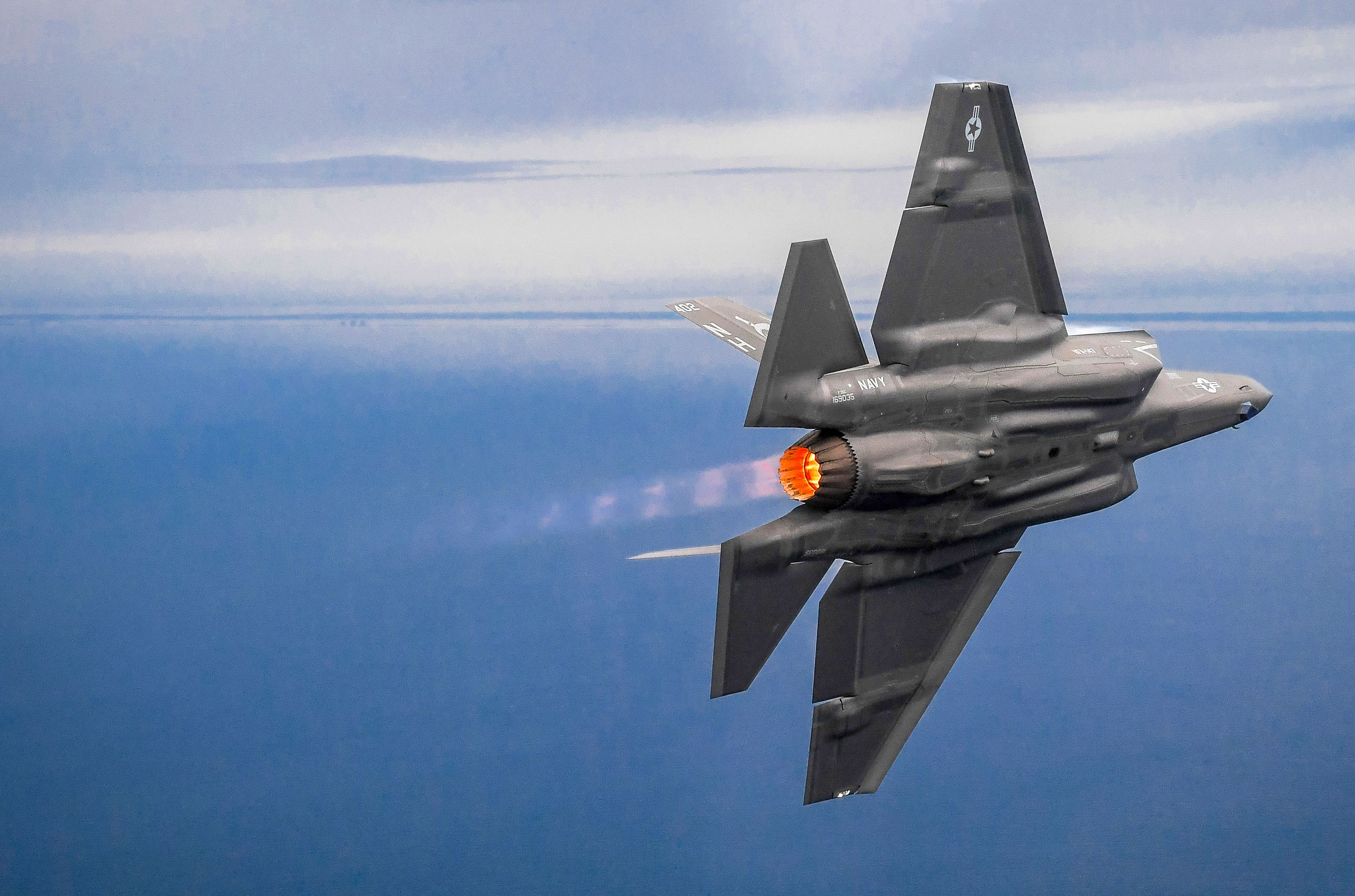
COVID-19 is slowing F-35 Lightning II Joint Strike Fighter production because of supply chain disruptions caused by national and international attempts to stop the spread of the sickness, prime contractor Lockheed Martin said Tuesday.
The U.S military’s readiness is not expected to be hindered by slowing F-35 production, as maintenance and upgrade developments will likely experience only minimal COVID-19 impacts. However, the company is lowering its full-year sales outlook, Marillyn Hewson, Lockheed’s chief executive, told financial analysts during a conference call.
“The disruptions introduced by this virus have caused us to reduce our 2020 sales expectation as production and supply chain activities have recently slowed in our aeronautics business area,” Hewson said.
Lockheed Martin lowered its predicted 2020 sales range by a quarter of a billion to half a billion dollars, to be between $62.25 billion and $64 billion. Previously, Lockheed Martin predicted finishing the year with sales of between $62.7 billion and $64.25 billion.
Currently, the price of an F-35 A, the standard take-off and landing variant, is $89.2 million. The short take-off vertical landing variant used by the U.S. Marine Corps and the carrier variant used by the Marines and U.S. Navy cost more than $100 million per aircraft, according to Lockheed Martin.
In October, Lockheed Martin and the F-35 Lightning II Joint Program Office inked a long-awaited $34-billion deal to build the next three batches of 478 stealthy fighters. The contract lowers the price of F-35A aircraft to less than $80 million by the third batch. Of the aircraft covered by the deal, 291 are for the U.S. military, 127 are for F-35 international partners in the program and 60 aircraft are for F-35 Foreign Military Sales customers.
While Lockheed Martin is experiencing supply chain disruptions for several of its programs, the company’s aeronautics division and specifically its F-35 production poses the most significant concern, said Ken Possenriede, Lockheed Martin’s chief financial officer.
The vast array of F-35 parts-suppliers include many small and medium-sized businesses that are also struggling to keep production lines operating. Social distancing, site access, workforce health issues and supply disruptions are all factors slowing down production.
“We are proactively taking steps to help our suppliers and teammates during this difficult time,” Possenriede said. “Our current expectation is the next few months will be the peak of disruption, as the country and the rest of the world looks to successfully flatten the curve and move forward.”
In the meantime, Lockheed Martin is taking advantage of some policy changes instituted by the Department of Defense to help keep its supply chain operating. The Pentagon changed its progress payment rate from 80 percent to 90 percent of the contractor’s costs and changed some of the conditions regarding when progress payments are made, Passenriede said.
“We are now flowing this down to our supply base, starting with our small suppliers and our vulnerable suppliers,” Passenriede said. “We have a process where we work with our supply chain. They tell us who those suppliers are, we work with [U.S. Department of the] Treasury to determine on a weekly basis the cash flow.”
Other Lockheed Martin programs, such as space and missile systems, are less vulnerable to COVID-19-related disruptions. They either have much longer production cycles that can weather a months-long disruption or involve engineering work that can be done remotely or through staggered scheduling at worksites, Possenriede said.
Long-term, Hewson said the current COVID-19-related disruptions would not result in lasting financial or production problems. Lockheed Martin still predicts to finish 2020 with earnings of between $6.8 billion and $6.95 billion.
“We’re set up well with a $144-billion backlog,” Hewson said. “This is booked work that we have and a strong financial position.”
For Hewson, Tuesday also marked her last conference call discussing the company’s financial results with analysts. Hewson, 66, will become chairman of the Lockheed board effective June 15, when James Taiclet, 59, becomes the new chief executive.
Taiclet is leaving his post as the chief executive of telecommunications company American Tower Corporation, where he’s worked since 2001. Taiclet was already a member of the Lockheed board of directors.
Previously, Taiclet was president of Honeywell Aerospace Services, a unit of Honeywell International, according to his bio on the Lockheed website. Taiclet also worked for Pratt & Whitney, which makes the engines for the F-35 fighters. Taiclet is a 1982 graduate of the U.S. Air Force Academy and was a pilot during the Gulf War. Hewson said the combination of Taiclet’s military and business background is a good fit for Lockheed Martin.
“I think this is the right time for a transition in our company because our company is very strong and stable,” Hewson said. “We’ve got solid performance. We’ve got a very strong, robust growth strategy.”





